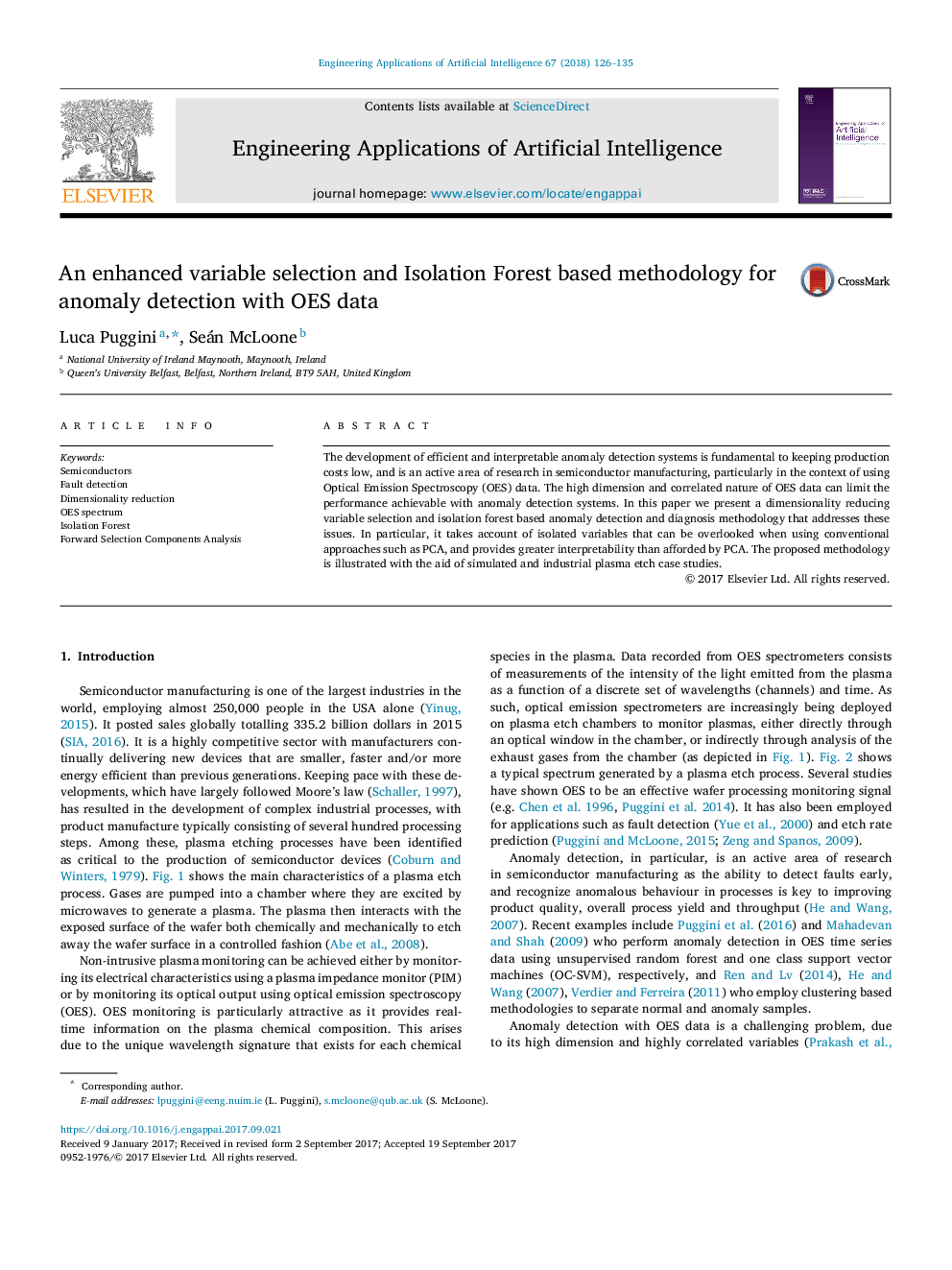| Article ID | Journal | Published Year | Pages | File Type |
|---|---|---|---|---|
| 4942573 | Engineering Applications of Artificial Intelligence | 2018 | 10 Pages |
Abstract
The development of efficient and interpretable anomaly detection systems is fundamental to keeping production costs low, and is an active area of research in semiconductor manufacturing, particularly in the context of using Optical Emission Spectroscopy (OES) data. The high dimension and correlated nature of OES data can limit the performance achievable with anomaly detection systems. In this paper we present a dimensionality reducing variable selection and isolation forest based anomaly detection and diagnosis methodology that addresses these issues. In particular, it takes account of isolated variables that can be overlooked when using conventional approaches such as PCA, and provides greater interpretability than afforded by PCA. The proposed methodology is illustrated with the aid of simulated and industrial plasma etch case studies.
Related Topics
Physical Sciences and Engineering
Computer Science
Artificial Intelligence
Authors
Luca Puggini, Seán McLoone,
